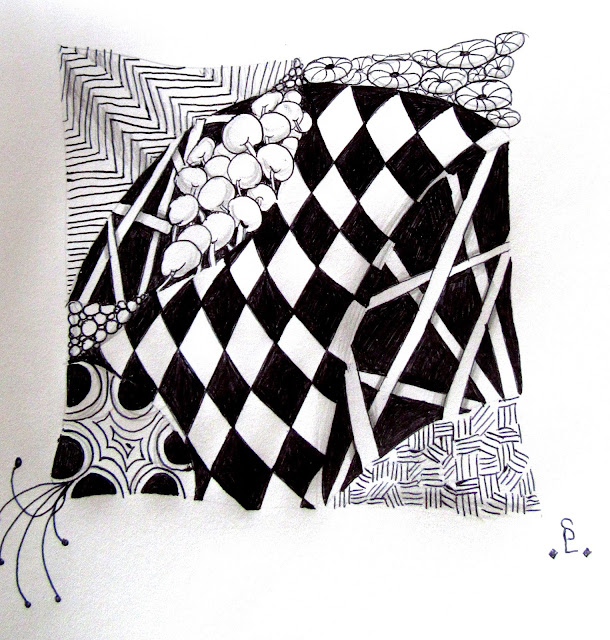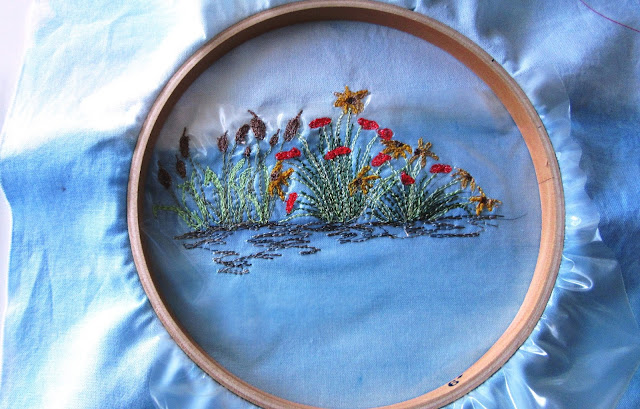Recently I organized my cupboards of fabrics and patterns. I've discovered things tucked away and shuffled around that I've had for years. Not just a stash of fabric, but the many notions I have, like buttons, velcro, DMC floss, tiny silk roses, snaps, bits of foil, etc, etc, etc... It may be time to purge myself of these things and move on. Will I be able to part with them? Hmmm, will have to ponder that for a while, but not linger on about it for too long. There's always Murphy's law. The moment I need something for a project, I won't have it any longer. So, that's why I'm in this predicament, boxes and drawers full of odd bits and pieces.
OK, enough rambling. Here is my year in review for 2016....
"Orange Slices" table runner using circle tool
T-Shirt quilt + tutorial on binding a quilt
Valentine quilt
"Green bricks" Baby quilt
"Bird on a wire" small art thread painted quilt
"In the Woods" post card snippets technique and thread painting
"In the Midst of Chaos" sister quilt of "Garden Ladder"
Biscornu book weights with quilt stitches and beaded edges
Eric and baby portrait quilt
Dad's portrait multi-embellished
Dad's portrait
Improv top (not finished)
Multi-medium post card with beads
Post Card Thread Study
Blue jean rug finished #2
College quilt for Clemson graduate
Baby quilt
Cheater quilt finished with beads and stitching
Not pictured are 12 TQPM (The Quilt Pattern Magazine) quilts for small pets finished and mailed to a kennel in need after hurricane flooding in South Carolina.
Also not pictured, Ornaments table runner, a Christmas gift for my DS.
A tangled stitched book cover, also a Christmas gift and a tangled and stitched luggage tag.
Wow, when I look back at the year in pictures like this, it really does put everything in perspective.
Here's to 2016 and looking forward to 2017....CHEERS everyone! :o)



















































.jpg)

.jpg)
